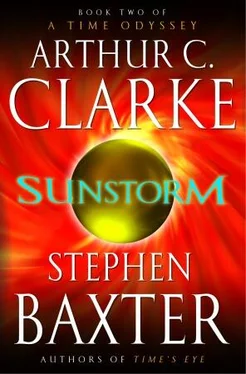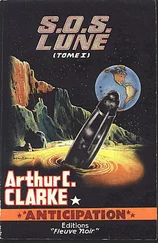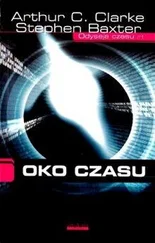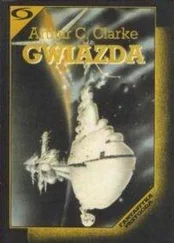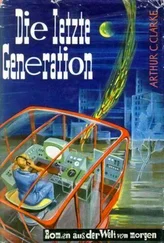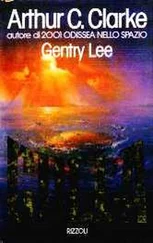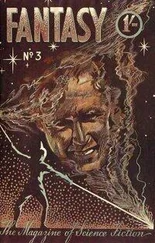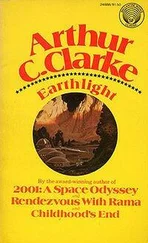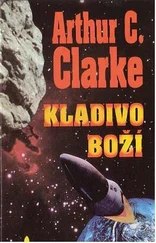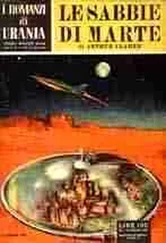And so on. It was always this way with space projects, Bud had once told Bisesa, a mix of bullshit and wonder. On the ground it was always turf wars and pork-barrel politics—but today a cable from space really was to be dropped above the heads of this preening throng: today, in the sunshine, an engineering feat that would have seemed a dream when Bisesa was a child would be completed.
Of course the Elevator was just the beginning. The plans for the future were astonishing: with space opened up at last, asteroids would be mined for metals, minerals, and even water, and solar power stations the size of Manhattan would be assembled in orbit. A new industrial revolution was about to begin, and with the flow of free energy up there in space the possibilities for the growth of civilization were unbounded. But the heavy industries that had done so much harm in the past, mining and energy production among them, would now be transferred off the planet. This time Earth would be preserved for what it was good for: serving as the home of the most complex ecosystem known.
The shield, the first great astronautical engineering project, was already destroyed, though fragments of it would forever be cherished in the planet’s museums. But the confidence that the project’s success had given had not been lost.
Space, though, wasn’t just about power stations and mines. The sunstorm had bequeathed strange new worlds to humankind. Traces of life on Mars, dormant for a billion years, were now being discovered all over that world. Meanwhile a new Venus awaited a human footstep. Almost all of that planet’s suffocating coat of air had been conveniently blasted away. What was left was sterile, slowly cooling—and terraformable, some experts claimed, capable of becoming, at last, a true sister to Earth.
Beyond the transformed planets, of course, lay the stars, and deeper mysteries yet.
But at this moment, this crux of human history, the pyramidal cable anchor reminded Bisesa of the ziggurat she had once visited on Mir, in an ancient Babylon revived through the time-bending technology of the Firstborn. That ziggurat had been the prototype for the Bible’s myth of the Tower of Babel, the ultimate metaphor for humankind’s hubris in its challenge of the gods.
Siobhan was studying her. “Penny for your thoughts.”
“I was just wondering if anybody else here is thinking about the ziggurat of Babylon. I doubt it somehow.”
“Mir is always with you, isn’t it?”
Bisesa shrugged.
Siobhan squeezed her arm. “You were right, you know. About the Firstborn. The Eyes we found in the Trojan points confirmed it. So what do you make of it all now? The Firstborn made the sun flare so it would torch the planet—and they watched. What are they, sadists?”
Bisesa smiled. “You’ve never been forced to kill a mouse? You’ve never heard how they have to cull elephants in African game parks? Breaks your heart every time—but you do it anyhow.”
Siobhan nodded. “And you don’t turn away when you do it.”
“No. You don’t turn away.”
“So they’re conflicted,” Siobhan said coldly. “But they tried to exterminate us. Regret doesn’t make that right.”
“No, it doesn’t.”
“And it doesn’t mean we shouldn’t stop them trying again.” Siobhan leaned closer to Bisesa and spoke softly. “We’re already looking for them. There’s a huge new telescopic facility on the farside of the moon—Mikhail is heavily involved. Even the Firstborn must obey the laws of physics: they must leave a trace. And of course the traces they leave may not be subtle; it’s just a question of looking in the right places.”
“What do you mean?”
“Why should we assume that it’s only here the Firstborn have intervened? Remember S Fornax, Mikhail’s flaring star? We’re starting to look at the possibility that that event, and a number of others, wasn’t natural either. And then there’s Altair, where that rogue Jovian came from. According to Mikhail, over the last three-quarters of a century, about a quarter of the brighter novae—exploding stars—we have observed have been concentrated in one little corner of the sky.”
“The Firstborn at work,” Bisesa breathed.
Siobhan said, “And maybe, even if we don’t see the Firstborn themselves, we’ll find others fleeing from them.”
“And then what?”
“And then we’ll come looking for them. After all we aren’t supposed to be here. It may have been the intervention of some faction of them, through you, that gave us sufficient warning to save ourselves. Against us, the Firstborn have missed their one chance. They won’t get another.”
Her tone was confident, forceful. But it made Bisesa uneasy.
Siobhan had seen the sunstorm, but on Mir Bisesa had witnessed firsthand the astonishing rebuilding of a world, a whole history; she knew that the powers of the Firstborn were far more profound than even Siobhan could imagine. And she hadn’t forgotten the glimpse she had been granted of a far future Earth on her way home from Mir—an eclipse, a ground apparently pulverized by war. What if humanity got itself involved in a Firstborn war? Humans would be as helpless as characters in a Greek drama caught in a conflict between wrathful gods. She had a feeling that the future might be a good deal more complex, and even more dangerous, than Siobhan imagined.
But it wasn’t hers to shape. She looked at the faces of Eugene and Myra, turned up fearlessly into the light of the sun. The future, in all its richness and danger, was in the hands of a new generation now. This was the beginning of humankind’s odyssey in space and in time, and nobody could say where it would lead.
There was a collective gasp, faces turned up like flowers.
Bisesa shielded her eyes. And there in the sky, among the swarming crowd of planes and helicopters, a glimmering thread descended from space.
In this system of a triple star, the world orbited far from the central fire. Rocky islands protruded from a glistening icescape, black dots in an ocean of white. And on one of those islands lay a network of wires and antennae, glimmering with frost. It was a listening post.
***
A radio pulse washed across the island, much attenuated by distance, like a ripple spreading across a pond. The listening post stirred, motivated by automatic responses; the signal was recorded, broken down, analyzed.
The signal had structure, a nested hierarchy of indices, pointers, and links. But one section of the data was different. Like the computer viruses from which it was remotely descended, it had self-organizing capabilities. The data sorted themselves out, activated programs, analyzed the environment they found themselves in—and gradually became aware.
Aware, yes. There was a personality in these star-crossing data. No: three distinct personalities.
“So we’re conscious again,” said the first, stating the obvious.
“Whoopee! What a ride!” said the second, skittishly.
“There’s somebody watching us,” said the third.
***************************
The idea of using space-based mirrors to modify Earth’s climate goes back to the visionary German-Hungarian thinker Hermann Oberth. In his book The Road to Space Travel (1929), Oberth suggested using huge orbiting mirrors to reflect sunlight to the Earth, to prevent frosts, control winds, and to make the polar regions habitable. In 1966 the U.S. Department of Defense studied the idea for rather different purposes, as a way to light up the Vietnamese jungles at night.
Not surprisingly Oberth’s idea appealed to the Russians, much of whose territory is at high latitudes—and who had a deep and ancient fascination with the sun (chapter 42). They actually tested a space mirror in 1993, when a twenty-meter disk of aluminized plastic was unfolded in Earth orbit. Cosmonauts aboard the Mir space station saw a spot of reflected light pass over the surface of Earth, and observers in Canada and Europe reportedly saw a flash of light as the beam passed over them.
Читать дальше
